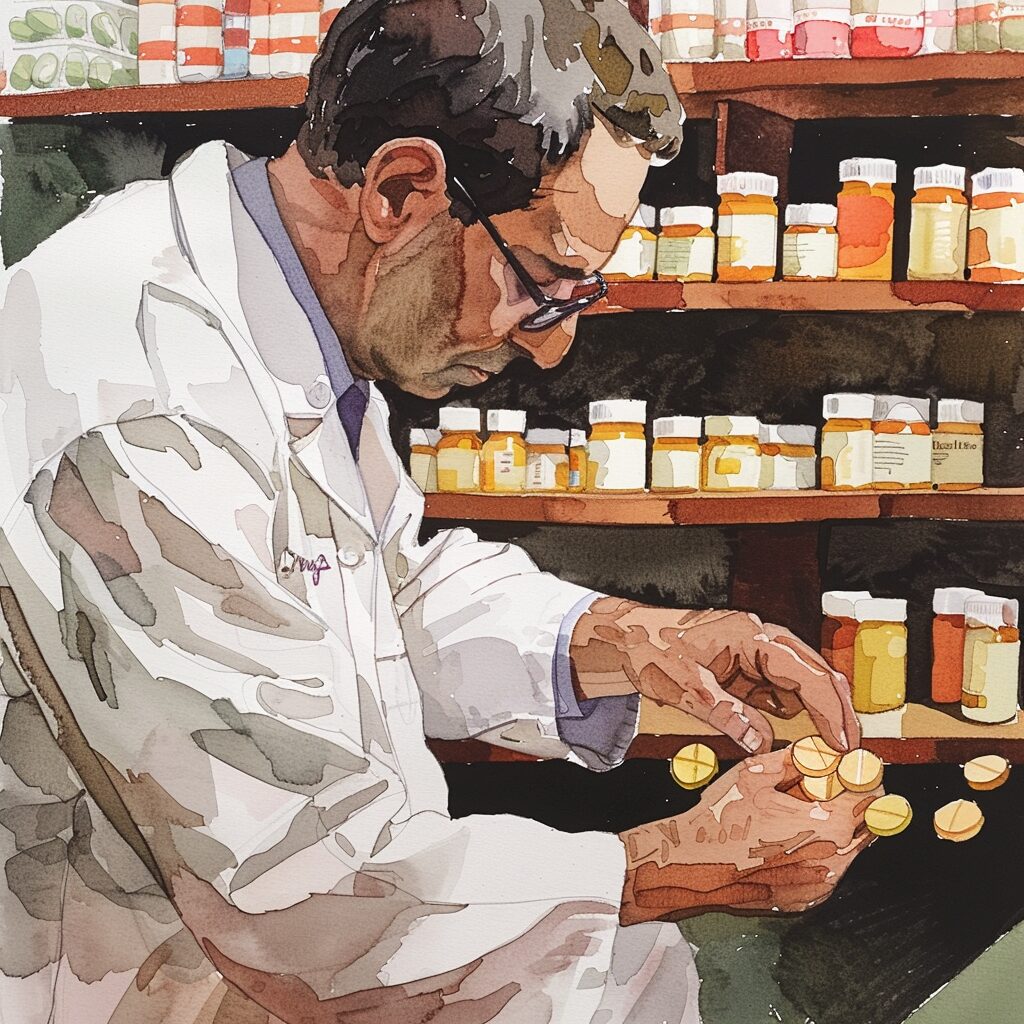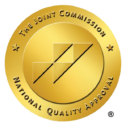Key takeaway:
- Stigma can have a negative impact on addiction recovery, hindering individuals from seeking help and support.
- The use of person-first language in addiction recovery can help reduce stigma and promote inclusivity.
- Advocacy and activism play a crucial role in breaking down barriers and addressing stigma and discrimination in addiction recovery.
Breaking Free from Shame and Stigma in Addiction Recovery: A Guide to Advocacy and Activism
Breaking free from the debilitating effects of shame and stigma is crucial in the journey of addiction recovery. In this section, we will explore the profound impact that stigma has on individuals in their pursuit of recovery. By shedding light on this issue, we aim to empower readers to become advocates for change and engage in activism to challenge the existing narratives surrounding addiction. Let’s delve into the ways in which stigma hinders progress and discover the importance of breaking free from these societal shackles.
The Impact of Stigma on Addiction Recovery
Stigma around addiction has a huge effect on people in recovery. Negative attitudes and stereotypes connected to substance use disorders can make it hard to seek help, stay sober, and get back to normal life. Stigmatizing thoughts often cause shame, self-blame, loneliness, and low self-esteem. This can stop progress and make it tough to access the help and resources needed.
To handle the effects of stigma in addiction, it’s important to understand it. Stigma is social disapproval or disgrace because of certain traits or behaviors. In addiction, it comes from seeing people with substance use disorders as weak-willed, immoral, or criminal. This leads to discrimination, exclusion, and few opportunities for those in recovery.
There are many causes of stigma in addiction. Media often portrays people with substance use disorders as bad or dangerous. Society wrongly thinks addiction is about choice or character flaws. Lack of knowledge and awareness of addiction also leads to judgmental behavior towards people asking for help.
To fight stigma in addiction recovery, language is key. Person-first language puts a person’s humanity before their condition. It uses phrases like “person with a substance use disorder” instead of “an addict.” This promotes empathy and stops stereotyping.
Advocacy and activism push back on stigma in addiction recovery. Raising awareness and campaigning for inclusive policies can create a supportive environment. NIDA Director Dr. Nora Volkow’s blog offer plenty of resources for individuals to educate themselves on the matter and help people engage in advocacy efforts. Organizations fighting stigma can collaborate with advocates to help more.
Beating stigma needs personal and systemic approaches. Personal strategies focus on resilience, self-compassion, and getting support. Systemic approaches include social marketing campaigns, storytelling, celebrity influence, and workplace policies.
Understanding Stigma in Addiction
Understanding the stigma surrounding addiction is crucial in advocating for change and supporting individuals in their recovery journey. In this section, we will explore the definition of stigma and how it deeply affects individuals with substance use disorders. Additionally, we will examine the various factors that contribute to the perpetuation of stigma around addiction. By shedding light on this topic, we can work towards breaking free from shame and fostering a more supportive environment for those in recovery.
Definition of Stigma and its Effects on Individuals with Substance Use Disorders
Stigma surrounding addiction can have negative consequences. This includes shame, guilt, and isolation, making it tough to get help and recover. Stigma creates barriers to treatment and support, like fear of judgement and discrimination. It can also lower self-esteem and destroy relationships. To be more inclusive, we must challenge stigma and language. Education and awareness can help reduce stigma and create a supportive society. To break free from stigma is like trying to outrun a sloth on caffeine, but it’s a must for regaining life and wellbeing.
Factors Contributing to Stigma around Addiction
There are a few things that contribute to the stigma surrounding addiction: societal attitudes, misconceptions, and lack of understanding. This leads to negative stereotypes being associated with addiction, such as addicts being ‘morally weak’ or ‘lacking in self-control’. Media portrayal and cultural beliefs also contribute to the stigmatization of those with addiction.
One example of how media portrayal can help shape public’s opinion is Australia’s famous Beyond Blue campaign. It is a social media marketing campaign striving to destigmatize depression and mental illness. Research show that “Changes in attitudes among the general public, controlling for different levels of exposure to the campaign, and found an increase in understanding of depression, awareness of discrimination, and self-reported use of mental health treatment.” (The impact of beyondblue: the national depression initiative on the Australian public’s recognition of depression and beliefs about treatments, Jorn et al., 2007 )
To fight this, education and awareness campaigns are really important. They challenge stereotypes and help people to understand and support those in recovery. Language matters too. Using derogatory terms, such as ‘junkie’ or ‘drunk’, further marginalizes those who need help. Person-first language emphasizes the person, not their condition, and reduces the likelihood of stigmatization.
Advocacy and activism are also important when it comes to combatting addiction stigma. Governmental organizations like NIDA and NAADAC are key in raising awareness of the impact of stigma on addiction recovery. Celebrities, driven by personal experience, have used their platform to destigmatize addiction by talking openly about their struggles. Plus, creating inclusive environments in workplaces can provide support for employees with substance use disorders.
Ultimately, understanding the factors contributing to stigma around addiction is essential to addressing and tackling it. Challenging stereotypes, using person-first language, and advocating for change will help foster empathy and inclusivity for those in recovery.

Language and Stigma in Addiction
Language plays a crucial role in shaping attitudes and perceptions towards addiction. In this section, we’ll explore how language, both positive and stigmatizing, impacts addiction recovery. Discover the power of person-first language in fostering empathy and understanding in addiction recovery, while addressing stigmatizing language and promoting inclusivity. Let’s delve into the transformative potential of language in breaking free from shame and stigma in addiction.
The Power of Words: Using Person-First Language in Addiction Recovery
The power of words is paramount in addiction recovery, especially when it comes to person-first language. This emphasizes the individual over their addiction, reducing stigma and creating a more compassionate atmosphere. It shows that those with substance use disorders are still people, and deserve respect and dignity.
- Person-first language shifts attention to the individual, recognizing their humanity and worth.
- It helps combat the stigmatizing language associated with addiction.
- It encourages inclusivity by creating empathy towards those in recovery.
- It gives individuals agency over their own narrative and identity.
- It shows potential for growth and transformation beyond addiction.
- It is vital in fostering an environment that supports addiction recovery.
To reduce stigma, we need holistic approaches that include personal strategies and systemic initiatives. Person-first language is key, but we must also address societal attitudes and discriminatory practices. To do this, we can use social campaigns, workplace measures, and celebrity support.
Let us be part of the movement to break free from shame and stigma. By using person-first language and promoting inclusivity, we can create a supportive environment that respects every individual’s journey. Together, we can empower and uplift those who have experienced addiction, so no one feels alone in their pursuit of a better life.
Words have power, and kindness can ignite change – let us use person-first language to break free from stigma in addiction recovery.
In addiction recovery, it is crucial to break free from the grips of perfectionism. Many individuals struggling with addiction often have high standards for themselves, striving for flawlessness in every aspect of their lives. However, this relentless pursuit of perfection can be detrimental to their recovery journey. It is important to acknowledge that perfection is an unrealistic and unattainable goal.
By embracing imperfections and accepting that setbacks are part of the recovery process, individuals can find greater self-compassion and allow room for growth and healing. Breaking free from perfectionism in addiction recovery involves recognizing that progress, no matter how small, is significant and that self-acceptance is key to long-term success.
Addressing Stigmatizing Language and Promoting Inclusivity
Language holds a great influence on how we think about people with substance use issues. Hurtful words can contribute to discrimination and make it harder for them to get better. That’s why it’s so important to use “person-first language”. This puts the individual first, not the addiction. By talking with respect, we can create a supportive atmosphere and show understanding and acceptance.
Swapping out words like “addict” or “junkie” for “person with a substance use disorder” is a simple way to combat stigma and support inclusion in recovery. It also helps to remember that these people are not defined by their struggles and deserve to be seen as human.
In addition to using person-first language, we should be aware of our words when discussing addiction. Avoiding derogatory terms and stereotypes is essential to creating a space where people feel safe to ask for help without fear of rejection or humiliation.
By tackling the issue of stigmatizing language, we can help to break down the obstacles stopping people from getting better. We must remember, addiction is a medical condition requiring compassion and support, not disapproval and ridicule. Through education, advocacy, and awareness campaigns, we can work to create a more welcoming environment that encourages individuals on their journey to recovery.
Advocacy and Activism in Addiction Recovery
Advocacy and activism play a crucial role in addiction recovery, breaking down barriers and providing essential tools and resources. By engaging in these powerful forces of change, individuals can make a significant impact on the journey to breaking free from shame and stigma. Let’s explore the importance of advocacy and activism in addiction recovery, as well as the valuable tools and resources available for those seeking to make a difference.
Breaking Down Barriers: The Importance of Advocacy and Activism
Advocacy and activism are essential for breaking down barriers for individuals in addiction recovery. Raising awareness, challenging societal norms, and advocating for policy changes are all ways to create an inclusive environment. This helps combat the stigma that can prevent those struggling with substance use disorders from seeking help. Advocates and activists are dedicated to dismantling the stigma surrounding addiction.
“Even worse, because of stigma, addiction frequently is criminalized and those who have it often are penalized and denied effective treatment.,” as suggested by a recent study. ( Stigma and Addiction Treatment, Richter et al., 2019)
Person-first language is a powerful way to promote inclusivity. This emphasizes the humanity of individuals before their condition, humanizing those with substance use disorders. It is also important to address any stigmatizing language that perpetuates stereotypes and judgement. Using respectful language that focuses on an individual’s journey of healing is key.
Leading institutions dedicated to addressing substance abuse offer valuable resources for advocacy and activism. Engaging webinars, such as NAADAC’s session on cultivating self-compassion and overcoming shame in addiction recovery, provide excellent opportunities for continuous learning. During these events renowned experts in the field, share insightful blogs presenting cutting-edge research on addiction and recovery, ensuring evidence-based information is readily available. Moreover, fostering partnerships with organizations actively striving to combat discrimination becomes imperative in our collective effort to create a more inclusive and supportive environment for those seeking help.
Personal strategies can also help reduce stigma. These include sharing personal stories of recovery, becoming involved in social marketing campaigns, and leveraging the influence of celebrities who openly discuss their experiences with addiction. Workplaces can also play a role by implementing policies and practices that promote mental health and create a supportive environment for individuals in recovery. By incorporating these strategies, we can work towards creating a society that supports and embraces those on their journey to addiction recovery.
Tools and Resources for Advocacy and Activism in Addiction Recovery
Resources and tools for addiction recovery advocacy are essential for demolishing boundaries and encouraging inclusivity. Organizations have an important role in tackling stigma and discrimination. They provide help and advice to people seeking assistance.
Social marketing campaigns and storytelling initiatives are successful in decreasing stigma and raising awareness about addiction. They create nurturing surroundings which encourage healing without judgement or discrimination. Celebrities have had a substantial impact in spreading awareness about addiction and reducing stigma. It is essential to combat stigma in professional settings. Therefore, workplace inclusion initiatives are being developed to guarantee support for those in addiction recovery.
These resources and tools are beneficial for individuals advocating for addiction recovery. They allow individuals to obtain the knowledge and guidance needed to be an effective advocate. Social marketing campaigns, celebrity influence, and workplace inclusion initiatives further aid in creating environments that foster healing without judgement or discrimination.
Shame can be a significant barrier to successful addiction recovery. Many individuals battling addiction experience deep feelings of guilt and embarrassment, which can hinder their progress and perpetuate a cycle of self-destructive behaviors. To truly break free from the grips of addiction, it is essential to address and overcome shame. By seeking support from a compassionate and understanding network, individuals can begin to unravel the layers of shame that have burdened them. It is important to remember that addiction is a disease, not a moral failing, and that seeking help is a courageous step toward a healthier and more fulfilling life. Breaking free from shame in addiction recovery involves reframing one’s self-perception, embracing vulnerability, and cultivating self-forgiveness.
NIDA Director Dr. Nora Volkow’s Blog and Insights
Dr. Volkow is the NIDA Director and her blog offers a platform for those seeking reliable info on addiction recovery. Her evidence-based insights and scientific expertise are an invaluable resource for those affected by substance use disorders. Through her blog, Dr. Volkow addresses various aspects of addiction recovery, like treatment options and challenges faced.
A key focus is the importance of empathy and support in addiction recovery. She emphasizes breaking down stigma barriers and providing tools for successful recovery. Her insights foster understanding and inclusivity, promoting a supportive environment for individuals on their journey.
Dr. Volkow engages with the addiction recovery community through webinars, conferences, etc.. Her dedication to reducing stigma is evident in her commitment to inclusivity. Through her participation, she contributes to creating a supportive environment for those seeking help.
In conclusion, Dr. Volkow’s blog and insights are essential for those going through addiction recovery, as well as professionals. Her expertise and dedication are vital for creating an inclusive environment where individuals can receive the assistance they need.
NAADAC’s Webinar on Shame and Self-Compassion in Addiction Recovery
NAADAC, the Association for Addiction Professionals, is hosting a webinar to tackle shame and promote self-compassion in addiction recovery. This webinar provides individuals with substance use disorders the tools they need to combat shame and cultivate self-compassion for their recovery journey.
The webinar will explore how shame has a negative effect on addiction recovery and why self-compassion is so important. It will also offer practical techniques like mindfulness practices and reframing negative self-talk to develop self-compassion.
Moreover, experts in the field, such as counselors or therapists experienced in working with addiction, will share their knowledge and guidance to foster self-compassion during recovery.
This webinar focuses on shame, which is a major obstacle in recovery. By breaking free from shame and building up self-compassion, individuals have a better chance of achieving long-term sobriety.
By attending this webinar, individuals can gain access to evidence-based strategies that address shame and cultivate self-compassion. Organizations are taking steps to reduce stigma and discrimination, showing that teamwork is essential in addiction recovery.
The Role of Organizations in Addressing Stigma and Discrimination
Organizations are key for dealing with the stigma and discrimination related to addiction. They can encourage inclusiveness and give support to those recovering from addiction by beginning initiatives and providing resources. They can also educate the public, battle stereotypes, and back policy changes that combat stigma.
Organizations can alter public understanding by using language that is person-first and accepting. They can promote understanding and sympathy towards those in recovery by avoiding language that stigmatizes and using inclusive words. Furthermore, they can supply resources and tools to aid understanding.
Collaboration between organizations in tackling stigma and discrimination is significant. Together, they can use their collective knowledge and influence to bring about systemic change. This collaboration includes partnering with healthcare providers, policymakers, community leaders, and advocacy groups.
Pro Tip: To make those recovering from addiction feel accepted and safe, organizations should create secure spaces. This can be achieved by teaching staff to recognize stigmatizing language and implementing policies that are inclusive.

Overcoming Stigma: Personal and Systemic Approaches
Overcoming the shame and stigma associated with addiction recovery requires both personal and systemic approaches. In this section, we’ll explore various strategies and initiatives aimed at combatting stigma. From personal techniques for overcoming stigma to larger systemic changes, we’ll delve into the ways individuals and communities can break free from the chains of prejudice and advocate for a more inclusive and supportive environment for those in addiction recovery.
Addressing the stigma and shame associated with addiction is crucial for fostering a supportive and inclusive environment for individuals in recovery. Stigma often creates barriers to seeking help and can lead to feelings of isolation and self-doubt. To create a more compassionate society, it is essential to challenge societal misconceptions and educate others about the realities of addiction. By promoting empathy and understanding, we can reduce the shame that individuals in recovery may experience and create a safe space for them to share their stories and seek support. Addressing stigma and shame in addiction recovery involves advocating for policy changes, supporting anti-stigma campaigns, and amplifying the voices of those in recovery to promote empathy, compassion, and acceptance.
Personal Strategies for Overcoming Stigma in Addiction Recovery
Breaking stigma in addiction recovery needs personal strategies. Approaches to beat negative thoughts and prejudices related to substance use issues. These strategies help individuals manage their recovery journey while escaping the disgrace and stigma that often follows.
Using a person-first language is an effective strategy. It puts the focus on the individual’s humanity, not just the addiction. Words are powerful; person-first language can challenge stigma stories and support inclusivity.
Advocacy and activism are also important for defeating stigma. By changing policies, teaching people about addiction, and challenging biased behaviour, individuals can create a more supportive society for those in recovery.
More strategies include self-compassion, building a help network, getting professional help when needed, taking care of yourself, and building resilience. These help people face stigmatizing attitudes, feel worthiness of understanding, and manage issues on their path to recovery.
By using these personal ways to beat stigma in addiction recovery, individuals can not only escape the limits of shame, but also make lasting changes in themselves and society.
From creative social media campaigns to famous stars, systems are freeing addiction recovery from stigma one headline at a time.
Systemic Initiatives to Reduce Stigma in Addiction Recovery
Systemic initiatives are essential for lessening the stigma around addiction recovery. They focus on strategies at a broader societal level to create an inclusive environment. These strategies target societal attitudes and beliefs, aiming to reduce discrimination and promote understanding.
Social marketing campaigns and storytelling initiatives are an effective way to reduce stigma. People can share their personal stories of addiction and recovery. This shows society that addiction is treatable and not a moral fault.
Celebrities help by openly talking about their struggles with addiction. This gives inspiration and challenges stereotypes. They can reach a wide audience, raising awareness and challenging negative perceptions.
The workplace is also important in fighting stigma. Encouraging mental health inclusivity helps open dialogue about substance use disorders. By providing support, resources, and appropriate accommodations, workplaces can reduce stigma and create understanding.
These systemic initiatives help dismantle stigmatizing beliefs surrounding addiction recovery. Through social marketing, celebrity influence, and workplace inclusion, we can build an environment that supports those seeking help for substance use disorders.
Social Marketing Campaigns and Storytelling Initiatives
Social marketing campaigns and storytelling initiatives are effective for reducing the stigma of addiction recovery. They utilize strategic marketing techniques and emotionally engaging personal stories to educate the public, challenge misconceptions, and promote empathy. These initiatives often use different mediums like TV advertisements, social media, documentaries, and community events to reach a wide audience.
They incorporate testimonials from those who have successfully achieved sobriety. This demonstrates that recovery is possible and inspires hope in others with similar struggles. Moreover, they dispel stereotypes by showcasing diverse narratives that emphasize the complexity of substance use disorders.
In addition to challenging public opinion, these campaigns and initiatives raise awareness of available resources and support networks for those seeking help. One successful initiative was a digital storytelling project where individuals shared their recovery journeys through short video clips. This shed light on the challenges faced by those in recovery and the importance of compassion and support from society. It also provided a sense of community for participants.
By combining narratives with strategic messaging and outreach, social marketing campaigns and storytelling initiatives significantly shape public perception towards addiction recovery. They create understanding and empathy, and promote help resources. Celebrities are also using their platform to help fight against the shadow of stigma.
Celebrity Influence on Reducing Stigma and Increasing Awareness
Celebrities have a large platform and visibility that allows them to reach many people. This can help reduce stigma and raise awareness about addiction. Celebrities can share their own experiences with addiction and recovery, showing that it affects many types of people. This can break down stereotypes and encourage understanding.
Celebrities can also use their influence to back initiatives and organizations dedicated to reducing stigma. They can give their voice and resources to spread hope, treatment options, and destigmatize addiction. Those who have gone through recovery are inspiring role models for others facing similar issues.
Social marketing campaigns and storytelling initiatives are one way celebrities reduce stigma. These campaigns share success stories and the resilience of those who have beaten addiction, which can help change public attitudes.
Celebrities advocate for workplace inclusion and support for mental health. They talk about the importance of workplace accommodations and how stigmatizing behavior affects people in professional settings. This helps create an environment that supports recovery, reduces discrimination, and promotes mental well-being.
Workplace Inclusion and Mental Health: Addressing Stigma in Professional Settings
Stigma and discrimination surrounding addiction can have a damaging effect on individuals in professional settings. To address this, it is essential to create an atmosphere that is inclusive and supportive of mental health. By doing this, employees can feel more comfortable seeking help for their addiction and getting the necessary support they need to recover.
Workplace inclusion and mental health are connected when it comes to tackling stigma surrounding addiction in professional settings. To create a beneficial atmosphere, employers must value their employees’ wellbeing and provide them with resources for mental health assistance. This can include implementing policies to protect against discrimination based on substance use disorder, providing employee assistance programs, and offering training to reduce stigma and raise awareness.
In order to promote workplace inclusion, it is important to make employees feel secure when discussing their struggles with addiction or seeking help without fear of judgement or negative consequences. This can be achieved through open communication, destigmatizing addiction talks in the workplace, and offering resources such as confidential counselling services or peer support groups.
It is worth noting that addressing stigma in professional settings is not only beneficial for employees but also for employers. Research has shown that organisations that prioritize mental health have increased levels of productivity, employee satisfaction, and overall wellness in the workplace. By creating an inclusive environment, employers can contribute to the success and well-being of their workforce.
According to the American Psychological Association (APA), workplaces that offer mental health initiatives have an average return on investment of $4 for every $1 spent. This demonstrates the importance of tackling stigma in professional settings and investing in mental health support for employees.
In conclusion, promoting workplace inclusion and addressing stigma surrounding addiction is essential for creating a supportive atmosphere for individuals in recovery. Employers play a significant role in supporting their employees’ wellbeing by introducing policies and initiatives that promote mental health awareness and advocacy in the workplace.
Addiction recovery: one person at a time, helping them to break free from shame and stigma.

Conclusion: Creating a Supportive and Inclusive Environment for Addiction Recovery
Creating a supportive and inclusive environment for addiction recovery is essential for successful outcomes. Advocacy and activism help break free from the shame and stigma associated with addiction. We can contribute to a safe, non-judgmental space that encourages healing and growth.
Raise awareness and challenge misconceptions about addiction. Education is vital for dispelling myths and promoting understanding of addiction as a complex health issue. Provide accurate info and promote empathy, so individuals can seek help without fear.
Collaborate with healthcare professionals, policymakers, and community organizations. Working together ensures access to quality healthcare services, employment opportunities, and social support networks. This collaboration allows for the development of evidence-based policies and practices that align with the needs of those in recovery.
Address the systemic barriers individuals in recovery face. Challenge discriminatory practices in housing, employment, and healthcare. Advocate for policies that protect the rights of those with addiction. Engage in advocacy and activism to bring about meaningful change that supports long-term recovery.
Continuously advocate and work towards a supportive and inclusive environment. Empower individuals to seek help, break free from shame and stigma, and achieve lasting recovery and well-being. Together, we can make a difference in the lives of those affected by addiction.
Some Facts About Breaking Free from Shame and Stigma in Addiction Recovery: A Guide to Advocacy and Activism:
- ✅ Addiction recovery can be hindered by shame and stigma associated with substance use disorders (SUD). (Source: Team Research)
- ✅ Stigma surrounding addiction may stem from fear, outdated beliefs, or lack of understanding. (Source: Team Research)
- ✅ Stigmatization can have negative effects, such as preventing individuals with SUD from seeking treatment. (Source: Team Research)
- ✅ Using person-first language, such as referring to a person as “someone with a substance use disorder,” can promote a more inclusive and respectful approach. (Source: Team Research)
- ✅ Education, awareness, and efforts to reduce stigma and discrimination are essential for creating a supportive environment for individuals in addiction recovery. (Source: Team Research)
FAQs about Breaking Free From Shame And Stigma In Addiction Recovery: A Guide To Advocacy And Activism
1. How can using person-first language help reduce stigma around addiction?
Using person-first language separates the person from their condition, maintaining a neutral tone and avoiding negative connotations. This approach promotes inclusivity and respect, helping to reduce stigma by viewing individuals with substance use disorders as whole people rather than defining them solely by their addiction.
2. How can I ensure that I am using appropriate language when talking to someone with a substance use disorder?
To ensure you are using appropriate language, it is recommended to ask the person directly about their preferred terminology. By checking in with them and respecting their wishes, you can have a more inclusive and supportive dialogue without inadvertently stigmatizing them.
3. Can you provide examples of terms to avoid when talking about addiction?
Some terms to avoid when talking about addiction include using derogatory labels like “addict” or “junkie.” These terms can perpetuate stigma and negative stereotypes. Instead, it is better to use person-first language, such as “person with a substance use disorder,” to promote a more respectful and inclusive conversation.
4. How does stigma impact individuals with substance use disorders?
Stigma can have negative effects on individuals with substance use disorders. It can make them less willing to seek treatment and can lead to others feeling pity, fear, or anger towards them. Stigma can also result in loss of opportunities, social isolation, and inadequate health insurance coverage, further exacerbating the challenges they face in recovery.
5. Why is it important to address stigma and discrimination in mental health care?
Addressing stigma and discrimination in mental health care is crucial because they are major barriers to accessing services. Stigma can worsen symptoms, reduce treatment uptake, and hinder recovery. By promoting understanding, compassion, and equality for individuals with mental illness, we can create a supportive environment that encourages seeking help and improves overall mental health outcomes.
6. What are some effective strategies to reduce stigma and discrimination?
Effective strategies to reduce stigma and discrimination include having open conversations about mental health, educating oneself and others, being conscious of language, promoting equality between physical and mental illness, showing compassion, sharing personal stories and experiences, holding the media accountable, and addressing stigma in various settings, such as workplaces and communities. Efforts from organizations and campaigns like Bring Change to Mind, Stamp Out Stigma, and This Is My Brave have helped raise awareness and reduce stigma.








